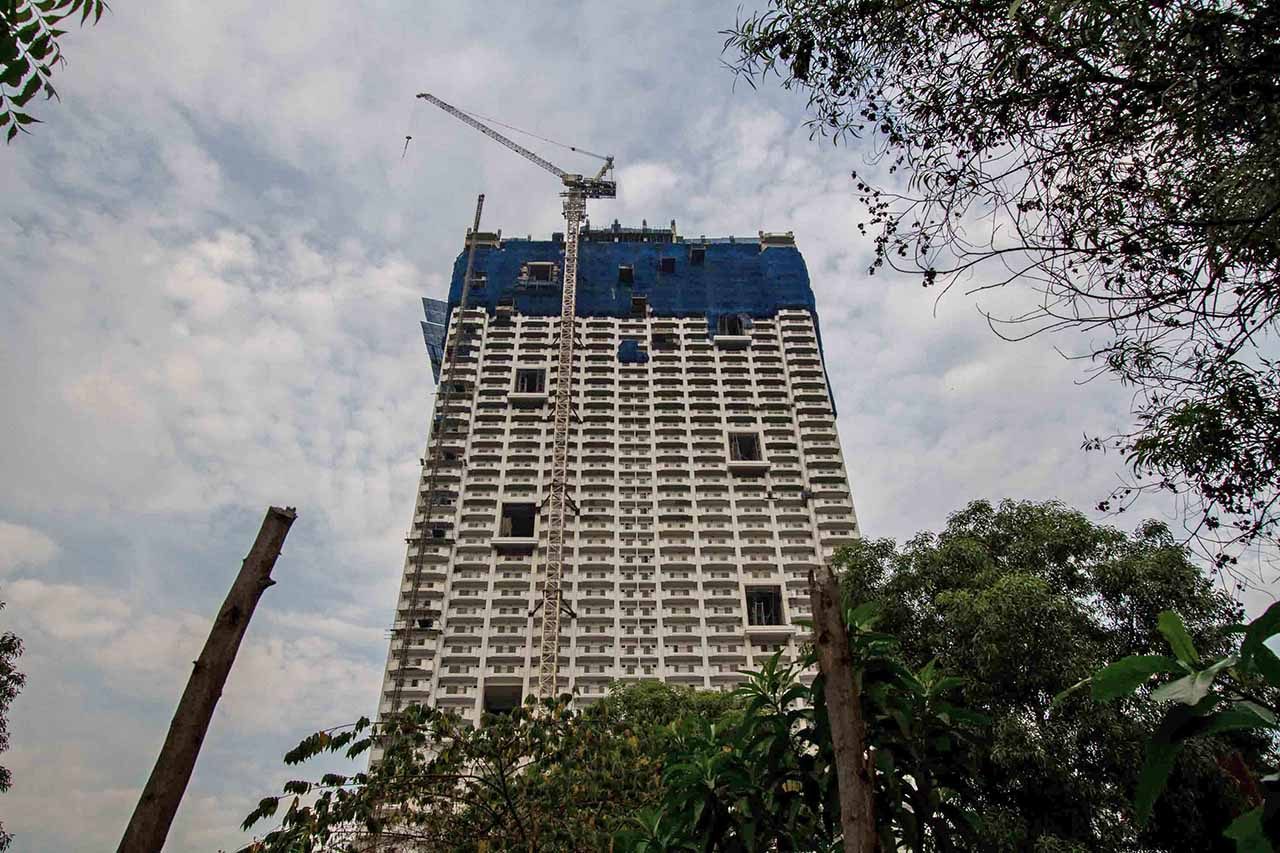SUMMARY
This is AI generated summarization, which may have errors. For context, always refer to the full article.

MANILA, Philippines – The National Historical Commission of the Philippines (NHCP) criticized the Office of the Solicitor General (OSG) for backtracking on its stance on the construction of the controversial Torre de Manila, which ruins the view of a national momument in Manila.
In a July 29 letter addressed to Solicitor General Florin Hilbay, NHCP Chair Maria Serena Diokno slammed the OSG for now saying that there was legal basis to stop the construction of the condominium project because it violates constitutional provisions on the preservation of cultural artifacts.
Diokno claimed that the OSG had assured the NHCP that it will be “cleared of responsibility” because there was “clearly no sufficient legal basis” to compel the NHCP to issue a cease and desist order (CDO) against the project.
The OSG represents government respondents NHCP, National Commission for Culture and the Arts, and National Museum in the September 2014 petition filed by the Knights of Rizal against Torre de Manila.
In January, the OSG asked the Supreme Court to discharge the government respondents in the case because they did not fail to perform their mandates in relation to the construction of Torre de Manila.
But a few days before the second round of oral arguments on August 4, Hilbay reversed his earlier position and now declared the condominium “illegal.”
“You assured me that the NHCP is ‘cleared’ of any responsibility because you will explain, if asked, that the NHCP board members are not constitutionalists. But the draft of your statement primarily cites Section 25 of the heritage law (Republic Act 10066), not the Constitution, as your legal basis,” Diokno wrote.
“So if the basis of your prayer that the NHCP be discharged as a respondent is gone, on what grounds, then, should we be discharged? Had you advised me earlier that you had changed your position, I would have had time to seek other counsel,” she added.
The NHCP chair also told Hilbay that his changing stance set a bad precedent on future cases involving heritage laws.
“The implications of your new position go well beyond the NHCP’s position. They are immensely worse for the nation particularly in terms of the rule of law, the right of the present generation to create its own heritage alongside that of earlier generations, and pending heritage cases, among others,” she said.
“You advised me not to worry about future cases and that you would be around to defend us. But if you change your mind again in the middle of a case, what are we to do?” Diokno added.
Protecting the sightline
Republic Act 10066 or the National Cultural Heritage Act of 2009 gives the NHCP the power to issue a CDO “when the physical integrity of the national cultural treasures or important cultural properties are found to be in danger of destruction or significant alteration from its original state.”
In his January position paper, Hilbay had said there was no legal basis for the issuance of a CDO because the condominium was constructed on private property, in an area “which is way beyond the protected buffer zone of the Rizal Monument and the Rizal Park.”
But in his new position paper, Hilbay now argued that the Rizal Monument – the obelisk, statue, and its sightline – should be taken and seen as an integrated unit that must be protected.
Because of this, the construction of the condominium, which heritage advocates have slammed for being clearly visible behind the monument of the national hero, should be stopped.
“With specific reference to the present controversy, the only way to “conserve” the Rizal Monument is by removing the impediment to its sightline: the presence of Torre de Manila,” Hilbay said.
NHCP on Torre de Manila
In her July 29 letter, Diokno emphasized that the NHCP “did not, does not like the Torre” and was only following the rule of law.
“Make no mistake: the NHCP did not, does not like the Torre. But as a responsible government agency, it does not and will not act on the grounds of personal preference but solely on the basis of the law, in this case, the heritage law and the NHCP charter,” she said.
The NHCP, however, has itself flipflopped on the issue. In a June 2012 hearing, the cultural agency said that the Torre de Manila violates guidelines on monuments honoring national heroes.
The guidelines stated that national monuments should be given prominence, and that one measure for preserving dominance is to “keep vista points and visual corridors to monuments clear for unobstructed viewing appreciation and photographic opportunities.”
But a few months later, Diokno wrote the project’s developer, DMCI Homes, to assure them that since Torre de Manila lies outside the boundaries of the protected Rizal Park, “it cannot possibly obstruct the front view of the said National Monument.”
DMCI is now using this November 2012 letter as a defense against claims that the construction project violated heritage laws.
The Supreme Court is set to continue interpellations for the respondents on the case on August 11. This will be the third round of oral arguments on the petition against the 49-story building.
On July 21, SC magistrates held the first round of hearings, repeatedly grilling the Knights of Rizal counsel, William Jasarino, to identify what laws Torre de Manila supposedly violated and to provide evidence that the building was built “in bad faith.”
On August 4, DMCI Homes counsel Victor Lazatin answered questions from SC Associate Justice Francis Jardeleza on whether or not the constitutional mandate to protect cultural properties extends to their vista or sightline. – Rappler.com
Add a comment
How does this make you feel?
There are no comments yet. Add your comment to start the conversation.